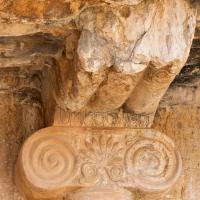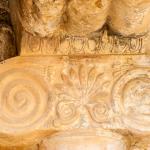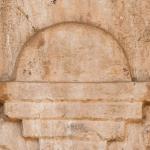Site Profile
The rock-cut tomb of Qyzqapan or Ishkewt-i Qizqapan ('Cave of the Ravisher') is located about a kilometer west of the village of Zarzi in the Sulaymaniyah/Slemani Governorate, Iraqi Kurdistan. On comparative and stylistic bases, the tomb has been dated to the late Median or Achaemenian period, with the latter being more likely.1 Its monumentality and rich decoration may suggest that it served as the tomb of a local ruler.
- 1. Herzfeld (Herzfeld 1941, 203–204) dates the tomb to the late Median period. More recently, scholars have favored a date in the Achaemenid period; see the discussion in von Gall 1988, 579–580.
Media
Description & Iconography
Early Publications
Cecil J. Edmonds published a description and photograph of the Qyzqapan tomb in 1934.1 Edmonds, who was briefly in charge of the Department of Antiquities in Iraq in the summer of 1931, was made aware of the Qyzqapan tomb through the mutasarrif of Sulaymaniyah, Ahmad Beg-i Taufiq Beg, who reported that he had “discovered” a rock carving, which he believed to be ancient Persian.2
Selected Bibliography
Bahrani, Zainab. 2017. Art of Mesopotamia. New York: Thames & Hudson.
Edmonds, Cecil J. 1934. “A Tomb in Kurdistan.” Iraq 1: 183–192.
Haerinck, Ernie. 1997. “Babylonia under Achaemenid Rule.” In Mesopotamia and Iran in the Persian Period: Conquest and Imperialism 539–331 B.C.; Proceedings of a Seminar in Memory of Vladimir G. Lukonin, edited by John Curtis, 26-34. London: British Museum Press.
Herzfeld, Ernst. 1941. Iran in the Ancient East. London: Oxford University Press.
Von Gall, Hubertus. 1988. “Das Felsgrab von Qizqapan: Ein Denkmal aus dem Umfeld der Achämenidischen Königsstrasse.” Baghdader Mitteilungen 19: 557–582.






























































